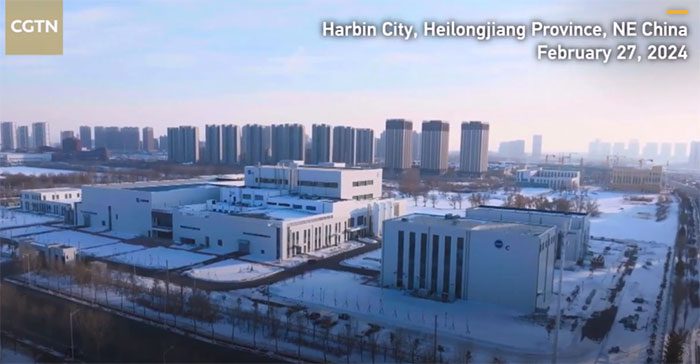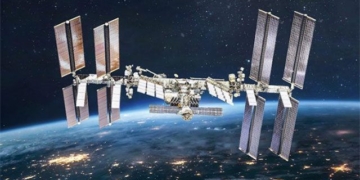A new facility capable of simulating 9 types of environmental factors of a space station allows for a multitude of space experiments right here on Earth.
(Video: CGTN)
The Space Environment Simulation and Research Infrastructure (SESRI), dubbed China’s first ground-based space station, successfully passed its acceptance evaluation in Harbin, the capital of Heilongjiang Province in northeast China, on February 27.
“This achievement means that many experiments previously required to be conducted in space can now take place right on the ground,” said Li Liyi, head of the Space Environment and Material Science Research Institute at Harbin Institute of Technology (HIT).
The ground-based space station is a collaborative project between HIT and the China Aerospace Science and Technology Corporation. The construction area features four laboratory buildings, including: comprehensive space environment, space plasma science, space magnetic environment science, and an animal breeding facility.
According to the plan, the ground-based space station can simulate 9 types of space environmental factors such as vacuum, high and low temperatures, charged particles, electromagnetic radiation, space dust, plasma, weak magnetic fields, neutral gases, and microgravity. The station can help explain the mechanisms and laws of the effects of the space environment on materials, devices, systems, and even living organisms.

China’s ground-based space station.
Compared to sending equipment and instruments into space, the ground-based space station helps save costs, reduce risks, and provides the ability to control certain environmental factors based on scientific and technical requirements. This allows for the repetition of research multiple times without being constrained by time or space.
The ground-based space station plays a crucial role in driving scientific and technological breakthroughs, transforming and upgrading industries, and training high-level talent in China, according to Han Jiecai, a scholar at the Chinese Academy of Sciences. In the future, HIT will continuously optimize the technical parameters and enhance the scientific capabilities of the station to contribute to China’s journey to becoming a space superpower.
As of June 2023, many Chinese and international scientists are competing to register for the use of the ground-based space station for scientific experiments. Over 110 organizations have signed contracts, including entities from more than 30 countries and regions.





















































